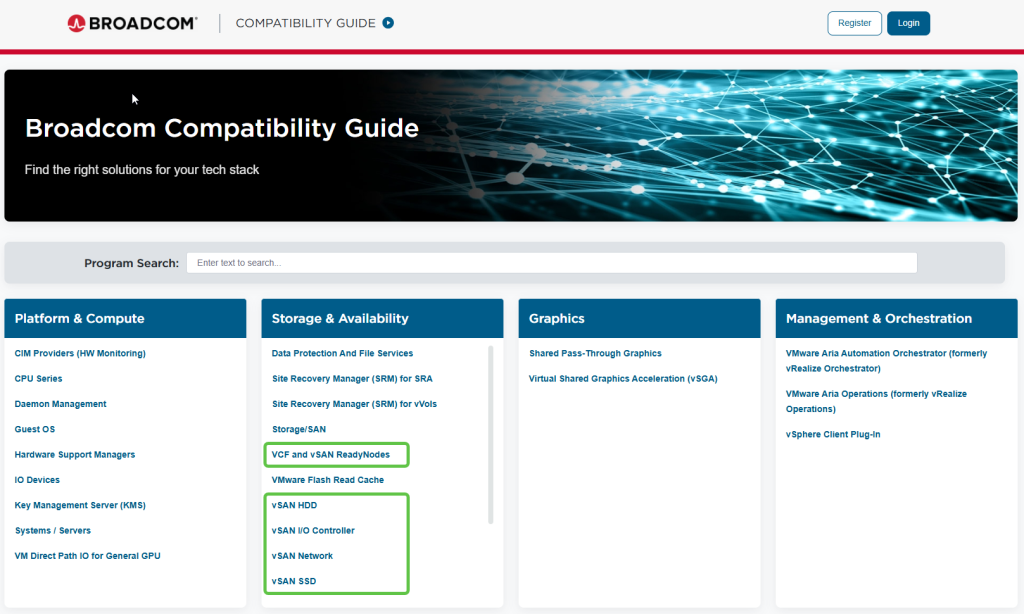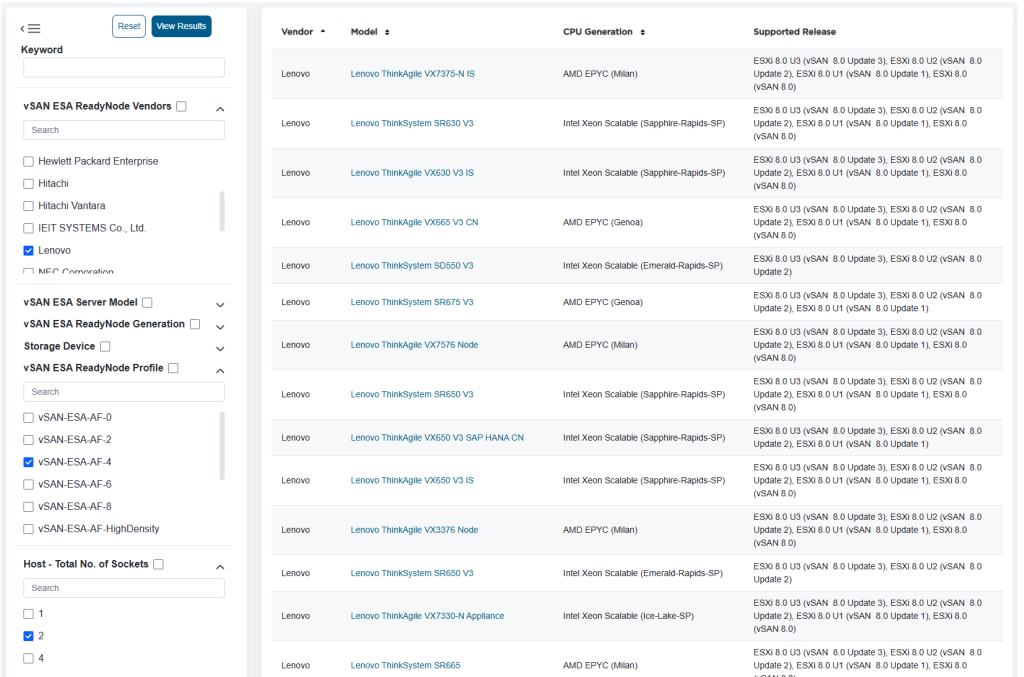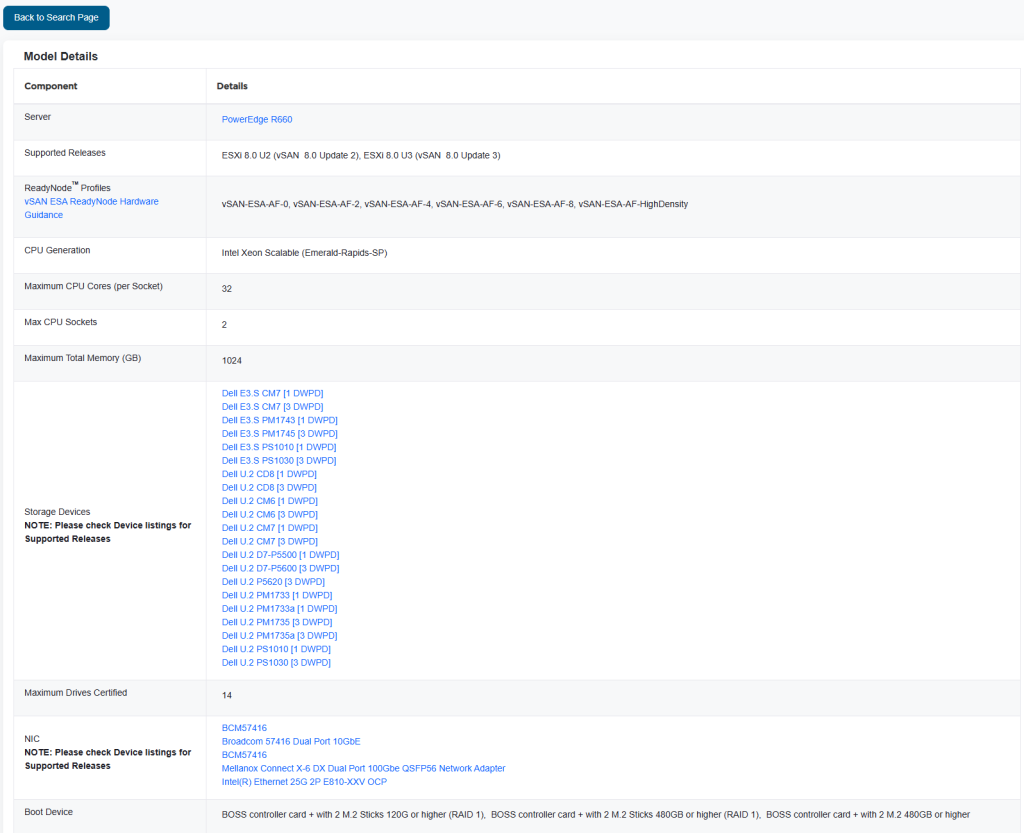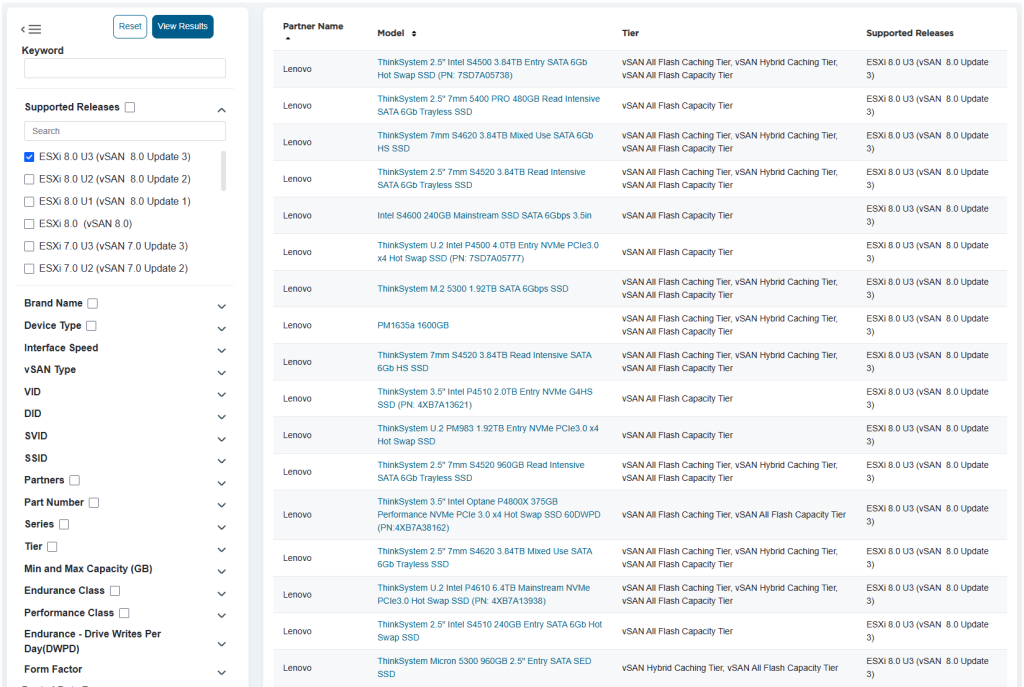One of the most extraordinary, yet overlooked aspects of VMware vSphere is its ability to run on such a wide variety of hardware. Customers could introduce new server hardware across their data center that reflected the very latest in technology, yet manage their environment in a consistent way. The VMware Compatibility Guide (VCG) has provided our customers a single location to verify hardware compatibility for a wide variety of circumstances.
Since VMware vSAN is a distributed storage solution directly integrated into the hypervisor, checking for compatibility with vSAN uses this same approach. vSAN relies heavily on storage devices and network communication, so it is compatible with a subset of hardware to ensure it can deliver optimal levels of storage performance and availability.
Given the wide assortment of hardware available, we wanted to revisit how checking for compatibility could be easier for our customers. The same level of compatibility with hardware remains, but the new interface aims to simplify the experience. The result is a completely redesigned compatibility guide that is now named the Broadcom Compatibility Guide (BCG). This all new portal delivers simplified navigation, concise search results, and need-to-know hardware details for your questions about ReadyNodes and supported hardware.
What has Changed
The BCG consists of several compatibility guides that cover hardware compatibility across the entire portfolio. Figure 1 shows the landing page for the various compatibility guides available. We’ll be highlighting some improvements to just a few of the compatibility guides related to vSAN.

Figure 1. Broadcom Compatibility Guide (BCG) landing page.
The VCF and vSAN ReadyNodes link will be the primary link used for most configurations. However, the new portal has discrete links for specific devices, such as:
- vSAN HDD (relevant for OSA clusters only)
- vSAN I/O Controller (relevant for OSA clusters only)
- vSAN over RDMA (vSAN OSA or ESA clusters)
- vSAN SSD (relevant for ESA and OSA clusters)
“VCF and vSAN ReadyNodes” View
The “VCF and vSAN ReadyNodes” view provides a simple way of determining what ReadyNodes certified for vSAN ESA are available for your environment. As shown in Figure 2, you can choose your preferred OEM server vendor, and filter it down to a given CPU generation or ReadyNode profile. The distilled listing is easy to navigate and customize.

Figure 2. A listing of ReadyNodes certified for vSAN ESA using the BCG.
Recommendation: When designing a new vSAN cluster, always take a look at offerings from at least one other server vendor. Many customers are finding this as a great way to ensure they can get the best pricing on server hardware.
When drilling into a specific ReadyNode presented, a concise summary will be provided that details the type and quantity of storage devices supported, network interface cards that are available and a myriad of other server configuration details. This new method of showing supported server configurations is a dramatic improvement over the method previously used. In one example, similar to Figure 3, a specific server showed 336 supported configurations using the old portal. The same search will now show up as a single listing in the new BCG. The example shown in Figure 3.

Figure 3. vSAN ReadyNode host Bill of Materials (BoM).
What ReadyNode profile should you choose? Use the vSAN ReadyNode Sizer to help you determine what may be best for you. The vSAN ReadyNode program helps ensure that customers can purchase servers that are preconfigured with the appropriate balance of CPU, memory, network, and storage resources to meet the needs of your organization. vSAN ReadyNodes help provide a starting point with hardware configurations, but also provide flexibility to meet the specific capacity and performance requirements for your environment.. See “vSAN ESA ReadyNode Hardware Guidance” and “What You Can (and Cannot) Change in a vSAN ESA and vSAN Max ReadyNode” for more information.
“vSAN SSD” View
Storage devices are one of the more critical aspects of a server configuration. The “vSAN SSD” view is purpose built to help decipher compatibility of a broad assortment of storage devices with vSAN. Storage devices can be filtered by capacity, form factor, Partner OEM, interface type, endurance and many other options.

Figure 4. vSAN SSD View.
The filtering can help you quickly get to what you hope to find. Are you looking for value-based, high capacity “Read Intensive” storage devices to expand your existing cluster? Simply select your filters, and click “View Results” for the listing of available storage devices that meet your criteria.
Recommendation: Strive for reasonable levels of symmetry for your vSAN HCI clusters as well as your vSAN storage clusters (previously known as vSAN Max).
Summary
Building and managing a private cloud isn’t just about configurations and settings in software. Hardware selection can play a critical role in the deployment, lifecycle management, and optimization of your environment. The new Broadcom Compatibility Guide for vSAN paired with the vSAN ReadyNode Sizer is the perfect combination to deliver a platform for VMware Cloud Foundation with ease and consistency.
Discover more from VMware Cloud Foundation (VCF) Blog
Subscribe to get the latest posts sent to your email.






